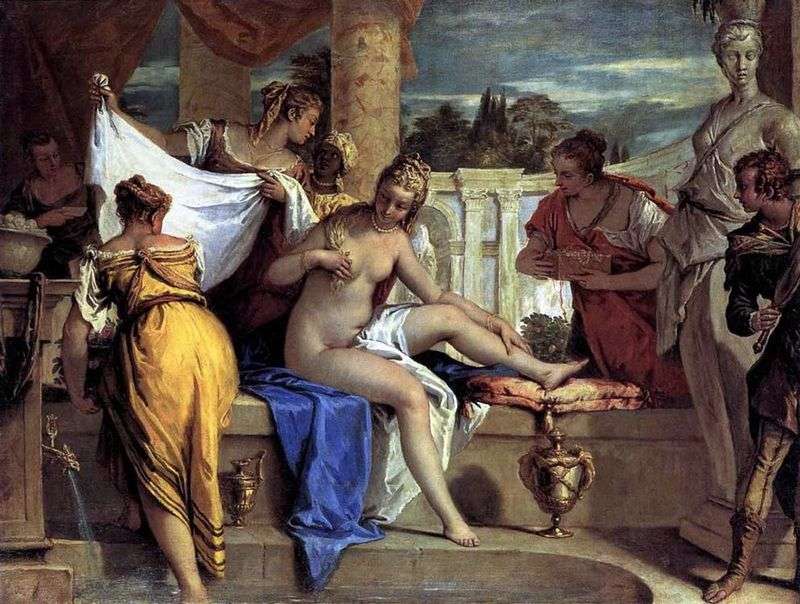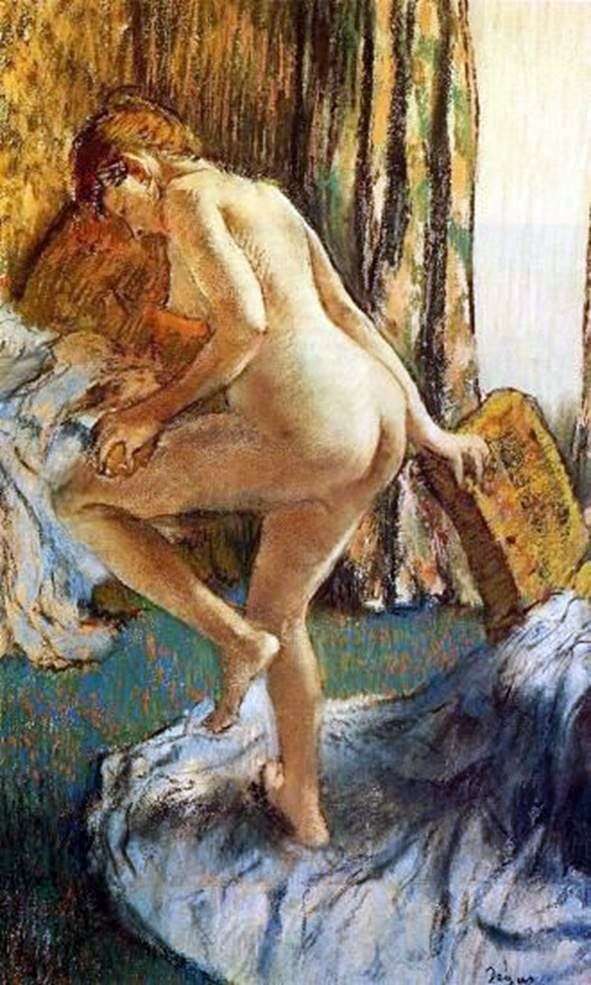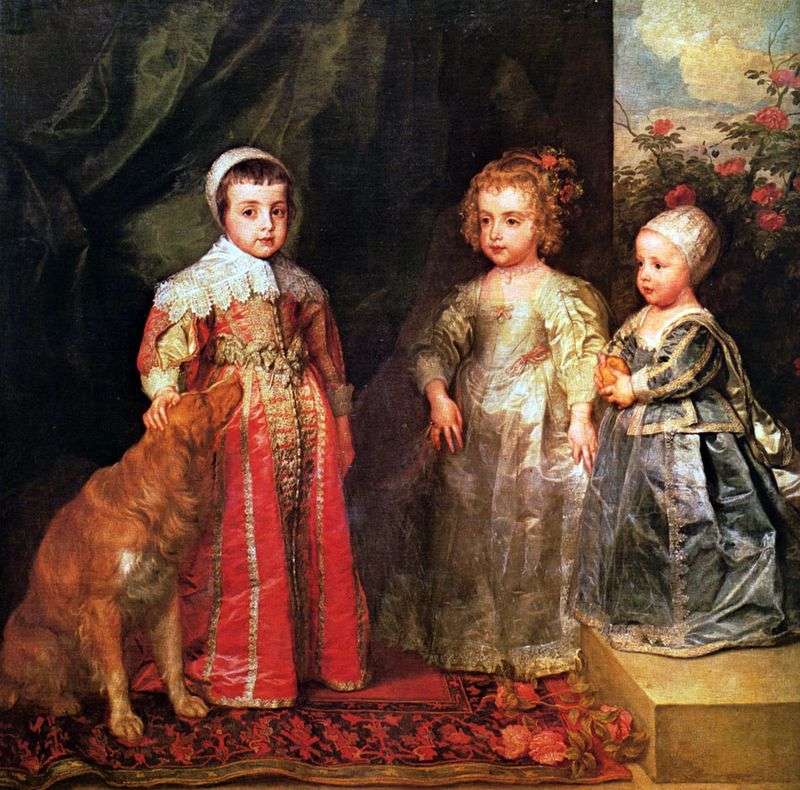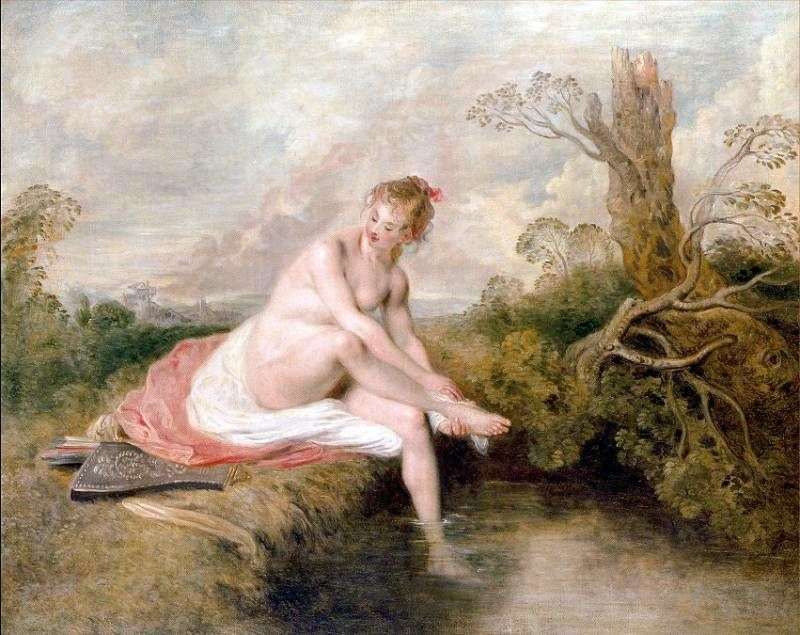
As a vivid example of the creation of the era of academicism, Charles Gleir’s canvas “Bathing” demonstrates a multifaceted and multi-figure. The painting is executed according to all the rules of painting of the XVII-XIX centuries. In it lives the pomposity and forms of classical drawing along with the touching scene of bathing a ruddy baby. Glair liked to write people. His talent opened at an early age, allowing him to draw from the nudes of a naked body. Throughout the creative path, the artist preferred a different branch of painting, including mythological, historical subjects and a portrait.
All of his paintings, as well as “Bathing”, were written for a long time with elaboration of the smallest details. This canvas demonstrates meticulousness, with which Charles Gleir prescribed a ceramic tile on the floor, strewn with small diamonds, including the skeleton of huge columns with a ribbed surface. In the picture, the interior is given no less attention than the trio that is occupied by bathing in a marble cup – a font. Ornament on the edge of the groove is complicated in the performance and the presence of small rocailles. The font itself has pink veins. The distant plan runs into a blossoming front garden. In the picture there is that layering that makes the viewer to plunge into these pages, like in a book. Now let’s turn to women and a funny kid who clearly does not want to take a bath. Most likely, that lady, that the child carefully keeps, his mother or the nurse. She is caring, tender, but at the same time insistent.
Fatigue is read on the face. Probably, the procedure of ablution was delayed, and the kid brought a lot of trouble. A woman’s clothes belong to ancient times. The companion, who froze naked before the cup, is young. Perhaps she is the baby’s sister. The girl prepared a clean embroidered veil, which is about to wrap up a little prankster. Her hair is weaved and clean, the color of them resembles a red ripe ear. The painting “sealed” the household scene, taking the small family by surprise.
It was as if Glader glanced into the intimate corner of the traditional way of the Roman family. The frame turned out to be warm and cozy. Heat is indicated through the color palette and contrast. Vanilla bodies glow with golden shine against the backdrop of shadows creeping behind them. From this, both women and children seem vulnerable and vulnerable. The smooth texture of the artist’s oil painting, almost photographic accuracy, conveyed the nature of the female bodies and the unformed boy. Despite leprosy, the baby is touching – good-looking. He is loved, and receives full caress and care, comparable to the attention and trembling with which the artist Charles touched the dry cloth, and strokes, and brushes.
 Evening Taulet Sappho by Charles Glir
Evening Taulet Sappho by Charles Glir Bathing Diana by Francois Boucher
Bathing Diana by Francois Boucher Bathing Bathsheba by Sebastiano Ricci
Bathing Bathsheba by Sebastiano Ricci After bathing by Edgar Degas
After bathing by Edgar Degas Bathing a red horse by Kuzma Petrov-Vodkin
Bathing a red horse by Kuzma Petrov-Vodkin Portrait of three older children of Charles I by Anthony Van Dyck
Portrait of three older children of Charles I by Anthony Van Dyck Bathing Diana by Jean Antoine Watteau
Bathing Diana by Jean Antoine Watteau Bathing ladies by Nicola Lancre
Bathing ladies by Nicola Lancre